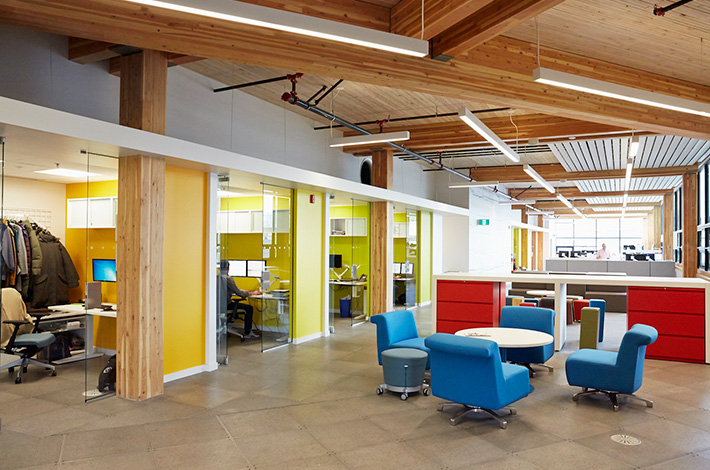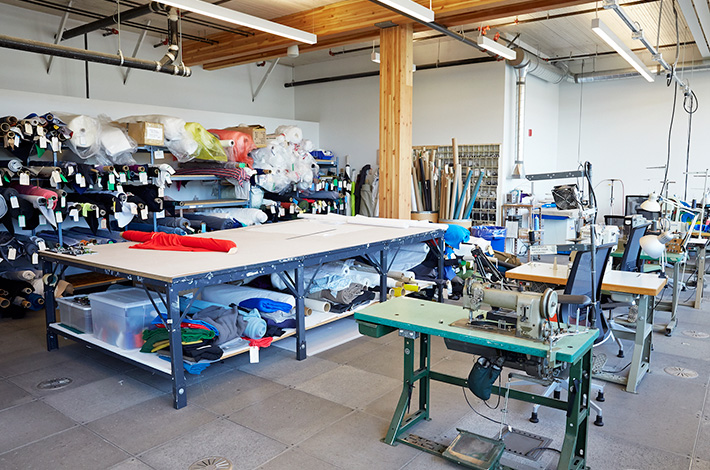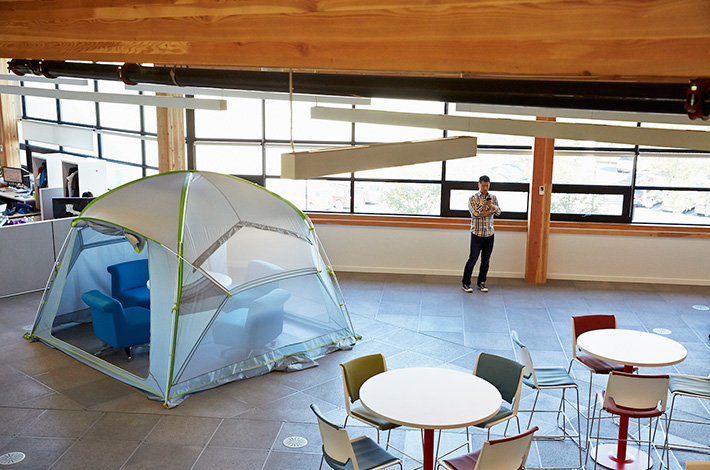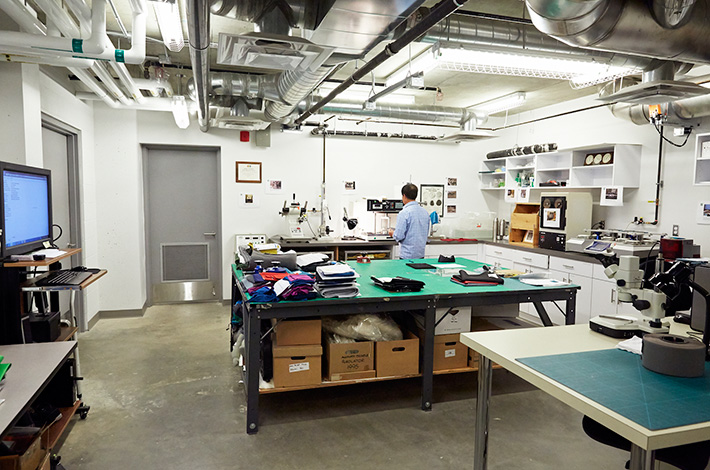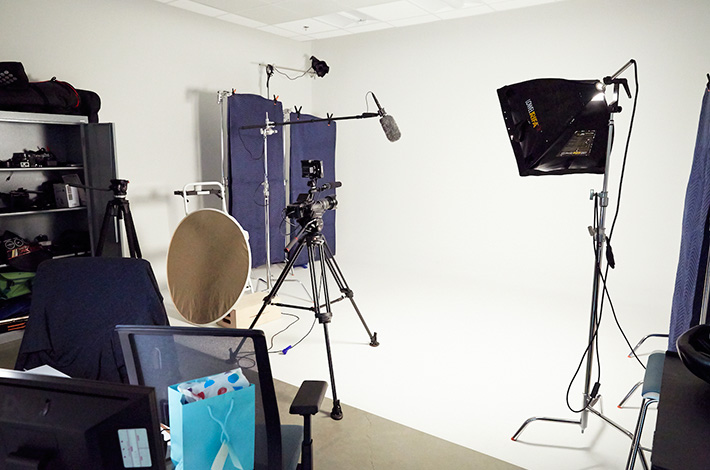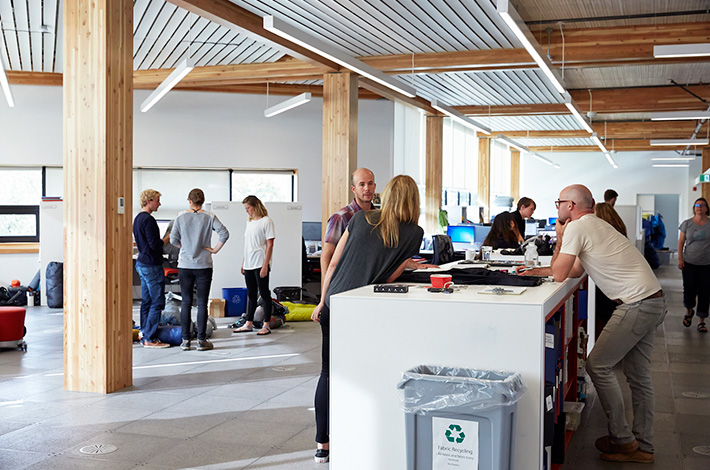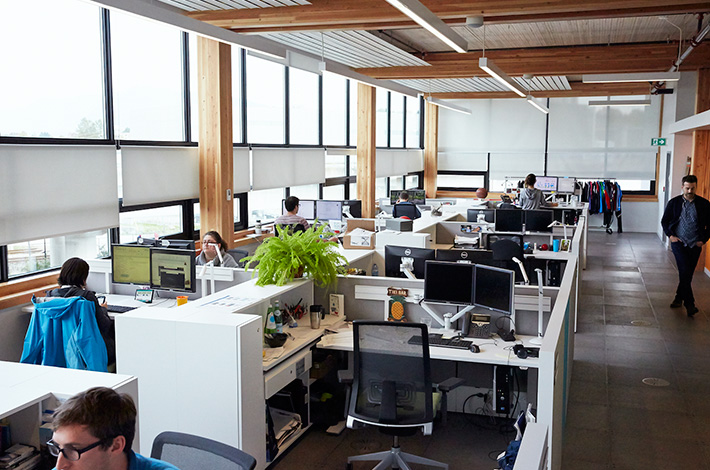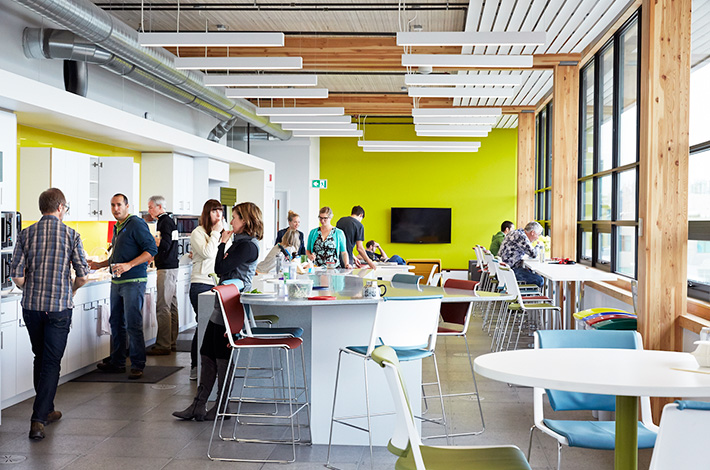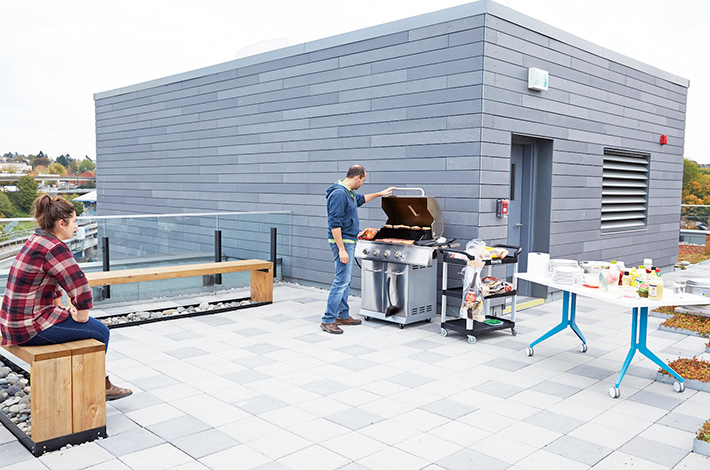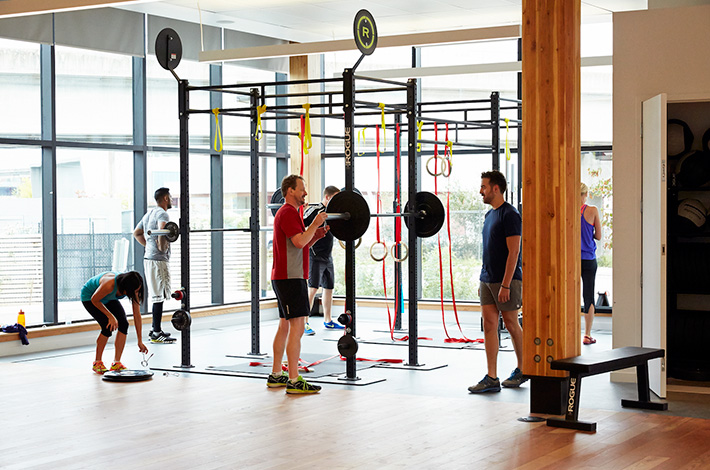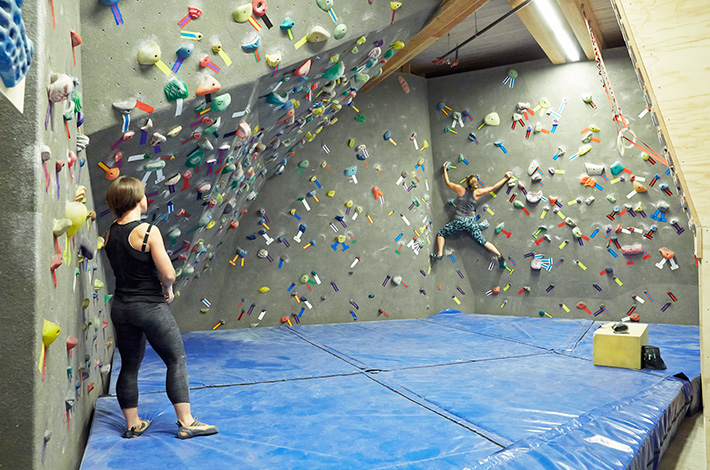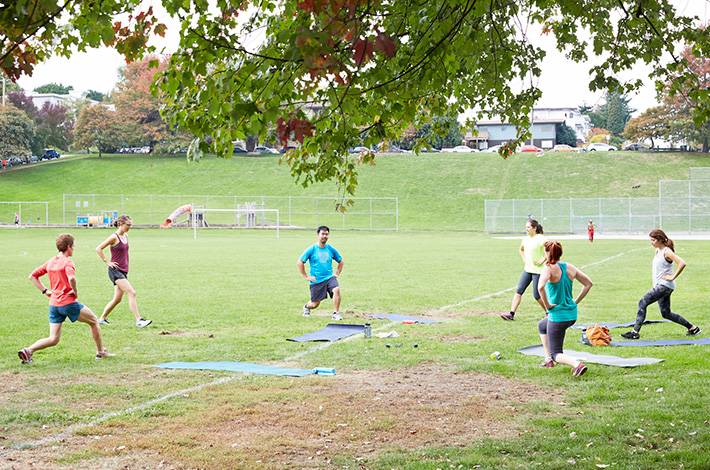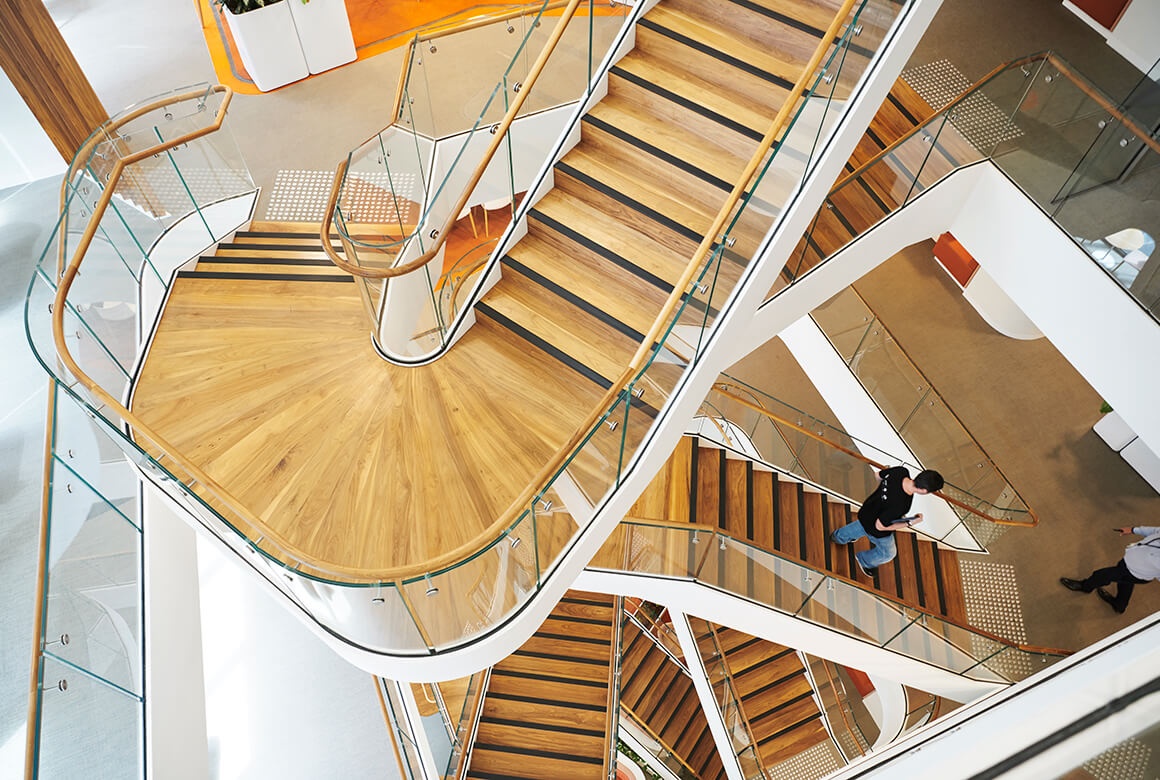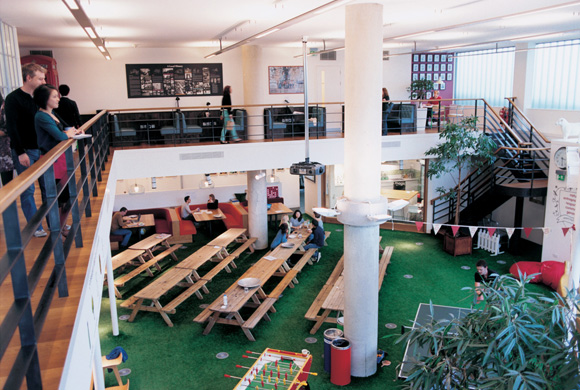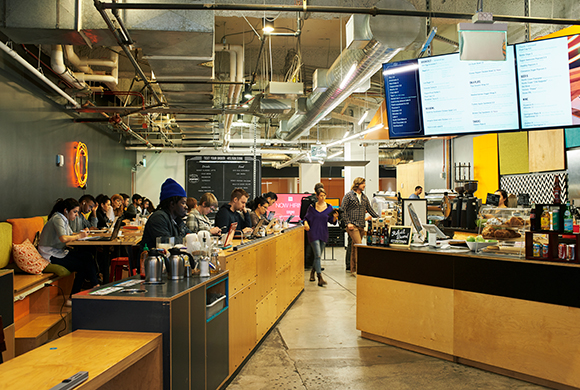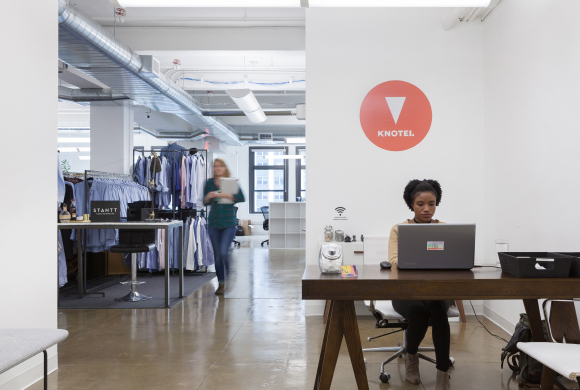Workplace
Dec. 16, 2019
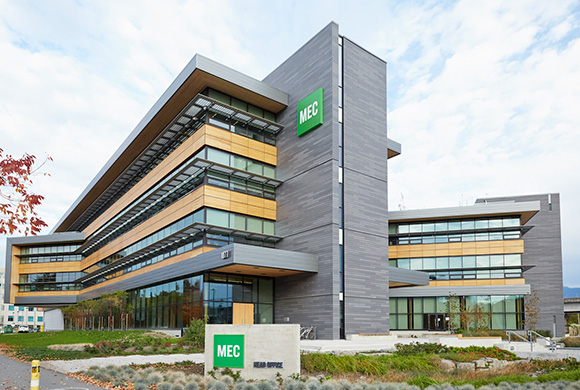
A green base for making good —and timely—decisions
Canada’s largest outdoor retailer promotes a rebranding
[MEC] Vancouver, Canada
Make it quickly, try it, and send it out. MEC is moving nimbly in order to catch up with an urbanizing outdoor business.
Canada’s largest outdoor shop, Mountain Equipment Co-op (MEC) is, as its name says, a cooperative with more than 4.3 million members. It has established 18 stores in Canada. About one-third of its products are its own original brand, with backpacks, tents, sleeping bags, apparel, and bicycles its main products. “MEC is very strong in children’s clothing,” says Tim Southam, Public Affairs Manager. “They’re a real bargain.”
The office has been practicing the Green Building philosophy for environmentally-friendly buildings, something that embodies the core values of an outdoor shop. The company owns seven buildings that have acquired the Green Building LEED certification; the headquarters is now in the certification process.
Despite requiring more structural members, there are reasons why the facility is composed of two buildings that intersect at a 45-degree angle. The windows are set high in relation to the flooring, and the width of the building is such that it captures sunlight in the center areas. Capturing the maximum amount of natural light throughout the year is part of providing a natural feeling inside the building, which is good for employees’ health and supports the image of MEC as an outdoor brand. All the wood used in the construction was sourced from British Columbia suppliers. The ratio of wood used in relation to the building’s overall size is in fact among the highest of any building in the province. Radiant-type air conditioning provides both energy savings and comfort.
Located in the heart of Vancouver, the office has good transportation links, and about 100 employees choose to commute by bicycle. “Although we already have seven buildings with LEED certification, our employees are aware of the potential of Green Buildings,” Mr. Southam says.
“In our business, it’s important to create a cool, green space. We want to create a healthy workplace, one that embodies our brand as an outdoor goods manufacturer. Also, I think that the younger generation in particular would like to be more active.”
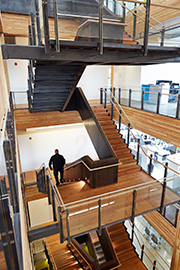
The office’s central staircase. The top floor has become a kitchen, one of the most heavily-trafficked places in the building. Situated at the center of the headquarters, the stairs help to invigorate MEC employees.
Founded: 1971
Sales: CAN$336 million (2014)
Net surplus: $1.394 million (2014)
Employees: 1,936 (2014)
Employees: 3,000 (2015)
https://www.mec.ca
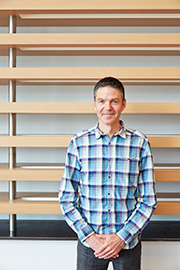
Tim Southam
Public Affairs Manager
These comments are part of his speculation about changes in the world of the outdoor business. In the past it was called outdoor recreation, and focused on hiking and climbing. More urban activities, such as cycling, walking, fitness, and yoga, have appeared over the past 10 years. Consequently, the number of activities the company supports has increased dramatically.
The company decided to rebrand itself, not only with external things like a change in the logo, but also an organizational change that started about two years ago.
The Bring It program was one of these efforts. Employees were called on to bring their best every day: “Bring it!” was the motto. These were things related to outdoor fun, or the fun of doing something in a group—all kinds of ideas to remind people about the value of the brand.
To catch up with the urbanization of the outdoor business, all of the functions needed for product development are now included within the building. For example, the prototyping room allows ideas to be translated immediately into products.
There is a test lab to investigate material strength or a fabric’s waterproof qualities. Here, too, athletes and outdoor aficionados are asked to test products and provide feedback.
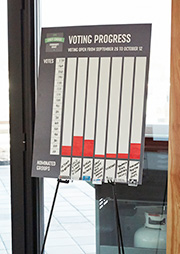
Board introducing the One Percent for the Planet program. The company participates along with organizations from snow sports and environmental conservation in this program to raise donations.
“A lot of the same equipment was in our previous office, but the space was much, much smaller,” Mr. Southam says. In the Equipment Demonstration Program (EDP), camping, paddling, demo good, and other products in the warehouse are lent out free of charge to employees.
The rooftop garden can be tried out, often doubles as a meeting space, but employees also often barbecue together here. Photos and videos are taken in the photo room, then posted on the company’s Website. So all the Support functions needed to “Make a product, try it out, and ship it” are right here.
The bouldering room is a place where employees on a break get some good exercise. The company founders were climbers, and climbing is still a big element for MEC. Total sales are strong, and there are still many climbers in-house.
“Product development is team work, achieved through collaboration,” Mr. Southam says. “Building design, too, is one of the things we aim at encouraging.” Looking at just the production team as an example, we see that the product manager, designer, materials specialist, and others are all involved. The same is true for the marketing team, which is a collaboration of writer, photographer, art director, and more. Without collaboration, nothing can move ahead. While managers of each product are given private rooms, other employees work in open spaces. The placing of a large kitchen on the top floor was also intended to foster collaboration.
“About 400 people work in this building, and there are no cafés around us, so basically everyone prepares meals for themselves,” Mr. Southam says. “There is a large refrigerator, and 10 microwave ovens.”
The company also supports an NGO, which was chosen by the employees. “The One Percent for the Planet program is one that we support at MEC, as does Patagonia.” Mr. Southam says. “The donations are one percent of our sales each year. Last year that meant the company contributed $3.25 million.”
The company is quite different from what it was ten years ago, he adds. “Our focus is on the creation of original products,” he says proudly.
Consultancy for Work Style: Proscenium Architecture + Interiors, MEC, and Brooks Corning
Interiors, MEC, and Brooks Corning
Interior Design: Proscenium Architecture + Interiors
Architect: Proscenium Architecture + Interiors
From WORKSIGHT 09(2016.4)
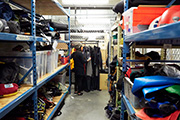
The underground warehouse for the Equipment Demonstration Program (EDP). Products are available for employee use free of charge.
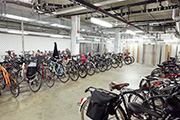
An underground parking lot. About 100 employees commute daily by bicycle.


